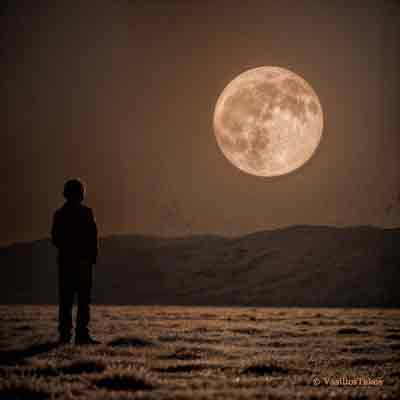What does the entrance of Uranus into Gemini in July 2025 mean?
- Analysis by Vasilios Takos -If you think 2025 will be a year of smooth sailing, hold on tight, because Uranus is packing its bags for Gemini and – trust me – this won't be just another trip. It’s like someone telling you you’re about to ride a roller coaster with Dolby Surround sound, 360-degree projections, and Wi-Fi at every turn! The entrance of Uranus into the communicative, fast, and unpredictable Gemini begins on July 7, 2025, and yes, it will not be a simple transit. This planetary duo promises to shake us in ways we will see, hear, and – most importantly – feel… with our whole being.
Uranus in Gemini! The signs that humanity is entering a new period of rapid changes are becoming increasingly visible, loud, and tangible. The entrance of Saturn and Neptune into Aries, the recent shift of Pluto into Aquarius, and the upcoming entrance of Uranus into Gemini sketch, echo, and convey a dynamic landscape of developments. In today’s article/video we will delve into the essence of this new phase, shedding light on Uranus entering Gemini — a transition that will begin on July 7, 2025, and last until November 8, 2025. Its permanent settlement in the zodiac space of Gemini starts on April 26, 2026, and will remain there until May 22, 2033. This astrological movement carries images of radical changes, sounds of transformation, and vibrations that deeply affect not only the personal and social domain but also the global scene.
If we take a look at previous eras with similar energies, we will hear echoes of deep transitions and feel their influence: From 1439, the transition to early European modernity begins to appear; 1523–30 resonates with the Reformation and the Ottoman conflicts. From 1606–1614, the path toward the Thirty Years’ War becomes clear, and from 1690–98 emerges the potential of the Grand Alliance. In the years 1774–82 the American Revolution comes forward, while from 1858–1866 the Italian Unification and the rise of Prussia take shape. The period 1941–1949 vibrated with the dramatic image of the Second World War, the founding of the UN, and the beginning of the Cold War.
In the geopolitical field, new forms of power are emerging that sound louder and are becoming more tangible within the global system. While the 20th century was dominated by the USA and the USSR, China is now transmitting a strong global signal in the field of technology and economy. Alongside it, emerging powers like India and regional alliances are bringing to life a multi-centric scene, vibrating with new forms of tension — acoustic conflicts in cyberspace, visible pressures in tech markets, and movements that cause geopolitical tremors.
In the social and economic field, we are experiencing the beginning of a strong and colorful transition: the fourth industrial revolution. Developments in artificial intelligence and robotics are shaping new images of everyday life, resonating in every production sector, and shaking the foundations of the labor market. At the same time, digital currencies and social networking platforms open horizons, cultivate experiences, and touch political participation in unprecedented ways.
The environmental dimension now dominates every discussion and is felt everywhere. It is no longer a distant scenario but a living image that sounds through extreme weather phenomena and burns the ground through desertification. Societies feel the need for change, see the urgency of green solutions, and hear the call for global cooperation.
Social cohesion and culture are in a fluid state. Strong ideological and political currents are surfacing, producing tremors and stirring structures. Liberal democracy is under question, while new governance systems are testing the ground by utilizing information and control technologies. The tension between freedoms and authoritarianism becomes tangible, echoes in political speeches, and is clearly depicted on social media. Information now colors reality, while false news and radical ideas easily penetrate the collective consciousness.
Finally, perhaps for the first time in history, societies see, hear, and feel the depth of global interdependence. Crises are no longer isolated — they spread rapidly, the planet vibrates as a whole. Yet this global network also creates opportunities: for collective action, for new visions of the future, for agreements that sound hopeful, for solutions we can touch.
In summary, history shows us clearly that we are in a transitional period comparable to the 15th or the 20th century. Whether this phase will come alive as a global conflict or resonate as a peaceful transition depends on the actions of leaders, the density of cooperation, and the mental disposition of societies to adapt and evolve.
Do you want to know how you will be personally affected? Stay with me, because tomorrow in part two I will shed light on, analyze, and convey exactly that for all zodiac signs.
Are you fascinated by astrology but struggle to decode birth charts? Take the next step in your journey! Our Natal Astrology Course (Level 1) is designed to help you build a strong foundation in chart interpretation, guiding you from curiosity to confidence. Join a like-minded community and start applying astrology in meaningful ways. Secure your spot today! 👉 Learn more






